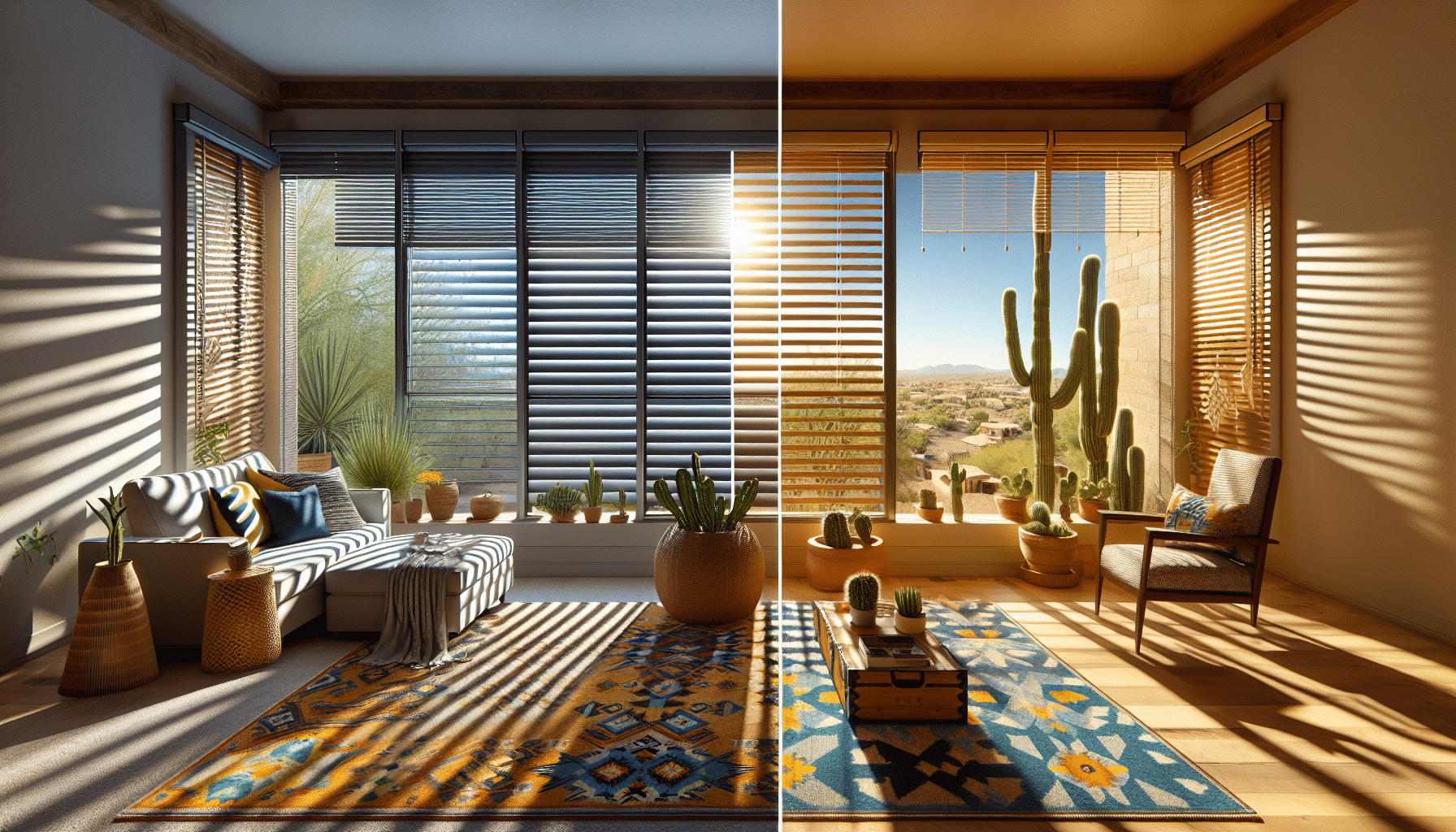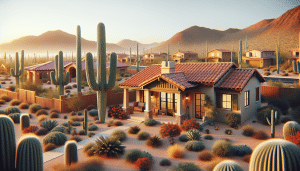Deciding between roll-up shade screens and traditional blinds can leave homeowners scratching their chins. At Arizona Screen Company, we know the importance of choosing the right window treatment for your home. This blog post will help demystify your options, providing a clear comparison to guide you in making the best decision. So, whether you’re seeking style, functionality, or energy efficiency, this article is your go-to guide.
Contents
Overview of Roll-Up Shade Screens
Roll-up shade screens have become increasingly popular for their sleek and modern look. But why have they become the darling of homeowners? These screens roll up and down with ease, providing an elegant solution to control sunlight and maintain privacy. Not only are they a chic addition to your home’s aesthetic, but they also offer significant functional perks. For those who value both style and utility, roll-up shade screens offer a compelling advantage.
Let’s not forget one of their most valuable assets: versatility. Whether you want to enjoy a morning coffee with some gentle sunlight or transform your living room into a cozy evening retreat, roll-up screens have you covered. They can be adjusted to create just the right atmosphere and are suitable for both indoor and outdoor settings.
Insights into Traditional Blinds
We’re all familiar with traditional blinds; they’ve been a staple in homes for decades. The allure of traditional blinds often lies in their classic appeal and the variety of materials available, from wood to faux wood and aluminum. Their horizontal lines can add a structured and clean look to any room, and they offer reliable privacy.
Traditional blinds are also known for their ability to control light. Adjusting the slats allows you to either filter the sunlight or block it completely, offering you a customizable lighting option. Moreover, they have stood the test of time, providing a sense of reliability and durability that many homeowners cherish.
Comparative Installation Ease
When it comes to installation, homeowners often seek a balance between simplicity and sturdiness. Installing roll-up shade screens is generally straightforward, and they are usually ready to mount with minimal adjustments. This hassle-free setup is appealing for DIY enthusiasts and those who prefer calling in the professionals alike.
On the flip side, traditional blinds may require a bit more installation effort. They often need precise measurements and adjustments to ensure a perfect fit inside the window frame. While installation might demand a bit more attention to detail, the payoff is a snug and precise window covering.
Energy Efficiency Benefits
In today’s eco-conscious world, energy efficiency has become paramount for many homeowners. Roll-up shade screens excel in enhancing energy efficiency by reducing glare and solar heat gain. This means your air conditioning system can have a breather during those scorching Arizona summers, leading to lower energy bills.
Traditional blinds also offer benefits in energy efficiency, albeit in a slightly different way. They create a barrier that helps insulate your home, keeping rooms cooler in the summer and warmer in the winter. Both options can contribute to a more energy-efficient home, but the mechanism by which they achieve this is distinct.
Light Control Capabilities
Dynamic Adjustment: Roll-up shade screens offer smooth dynamic adjustment, allowing you to easily find the perfect balance between light and shade. Slat Rotation: On the other hand, traditional blinds rely on slat rotation for light control, which could require a bit more effort to achieve the desired light levels. Consistent Coverage: Roll-up shade screens provide a uniform layer of coverage for entire window spans, offering a seamless look. Sectional Light Control: Traditional blinds allow for sectional light control based on slat manipulation, granting the ability to customize light entry. Glare Reduction: Both shade screens and blinds effectively reduce glare, but screens tend to offer a softer diffusion of sunlight.
Maintenance and Cleaning
Maintenance might not be glamorous, but it’s a critical consideration. Roll-up shade screens are low-maintenance, generally requiring just a simple wipe-down to keep them looking pristine. Many fabrics used in roll-up screens are resistant to fading and staining, ensuring they maintain their fresh appearance over time.
Traditional blinds, while durable, often require a bit more care. Dusting slats can be time-consuming, and certain materials may warp or discolor over time if not regularly cleaned. However, many homeowners take delight in the polished look achieved with a little elbow grease.
Aesthetic Appeal and Design Options
A home’s window treatments can significantly impact its overall aesthetic. Roll-up shade screens are known for their modern and minimalist appearance, seamlessly integrating into diverse home styles. They come in various colors and textiles, allowing homeowners to create a customized look that fits their style.
Traditional blinds offer a more classic feel, with various finishes and designs available to complement traditional or contemporary interiors. Whether you’re in love with rich woods or sleek metals, you’ll find a variety of options with traditional blinds that can be a design feature on their own.
Durability Factors
Let’s talk about longevity. Roll-up shade screens are crafted from durable materials designed to withstand everyday use, resisting wear and tear admirably. They are particularly well-suited for larger windows or patios where durability is paramount.
Conversely, traditional blinds can also stand the test of time, thanks to the high-quality materials and construction methods used. However, durability can vary depending on the material choice, with wood requiring more care compared to its counterparts.
Cost Considerations
When deciding on window treatments, budget plays a key role. Roll-up shade screens can represent a higher upfront investment, especially for motorized or customized options. However, their added benefits such as energy efficiency and aesthetic appeal may justify the cost for many homeowners.
Traditional blinds, often considered more budget-friendly, come with a range of prices depending on materials and customizations. Though more affordable, there’s no skimping on style or functionality with traditional blinds, offering an enticing option for those mindful of cost.
Final Thoughts
We hope this guide has clarified the distinctions between roll-up shade screens and traditional blinds, helping you make a choice that suits your home and lifestyle. For further guidance, Contact Us at 480-771-2543 or Request a Free Quote.




